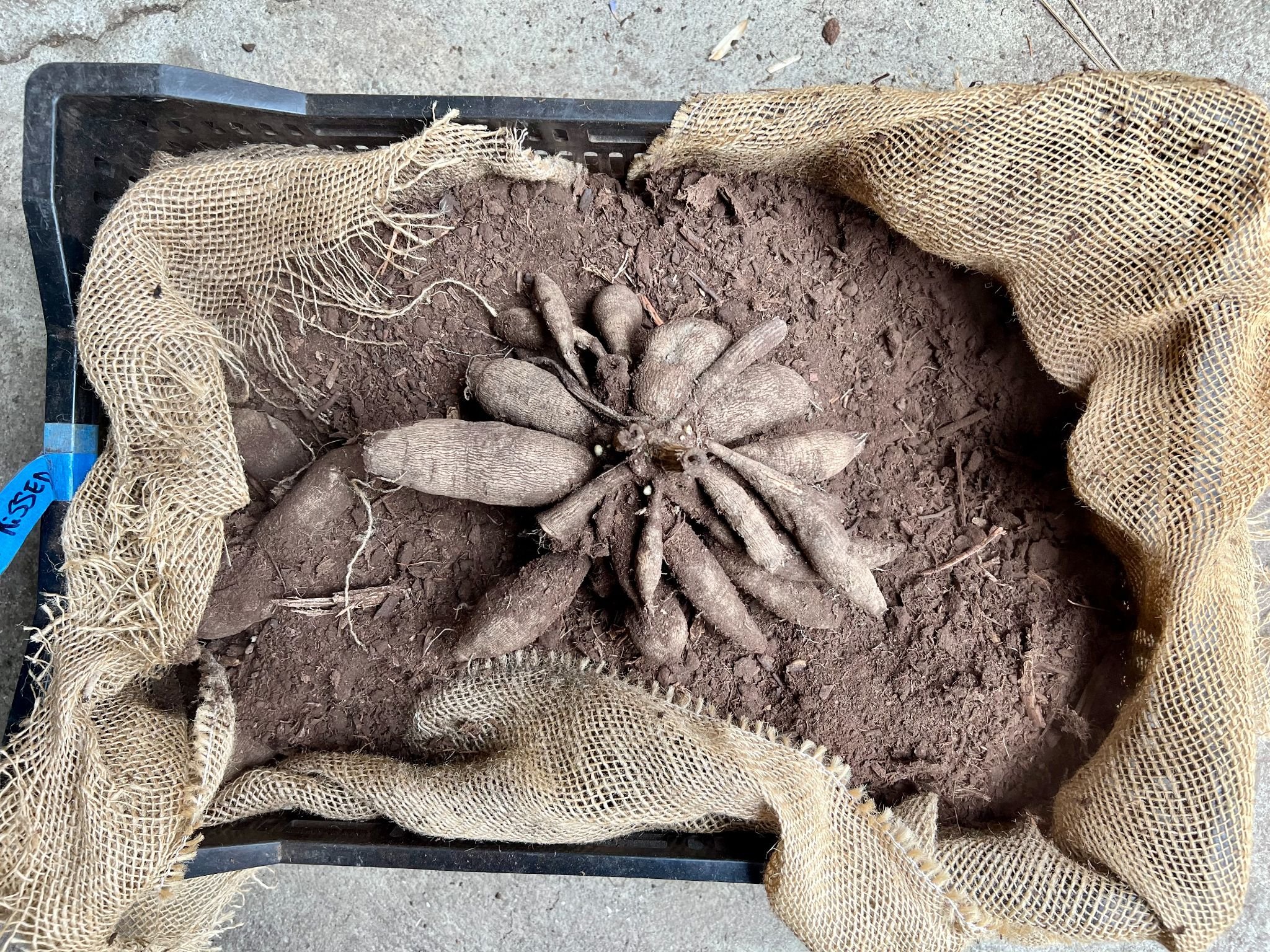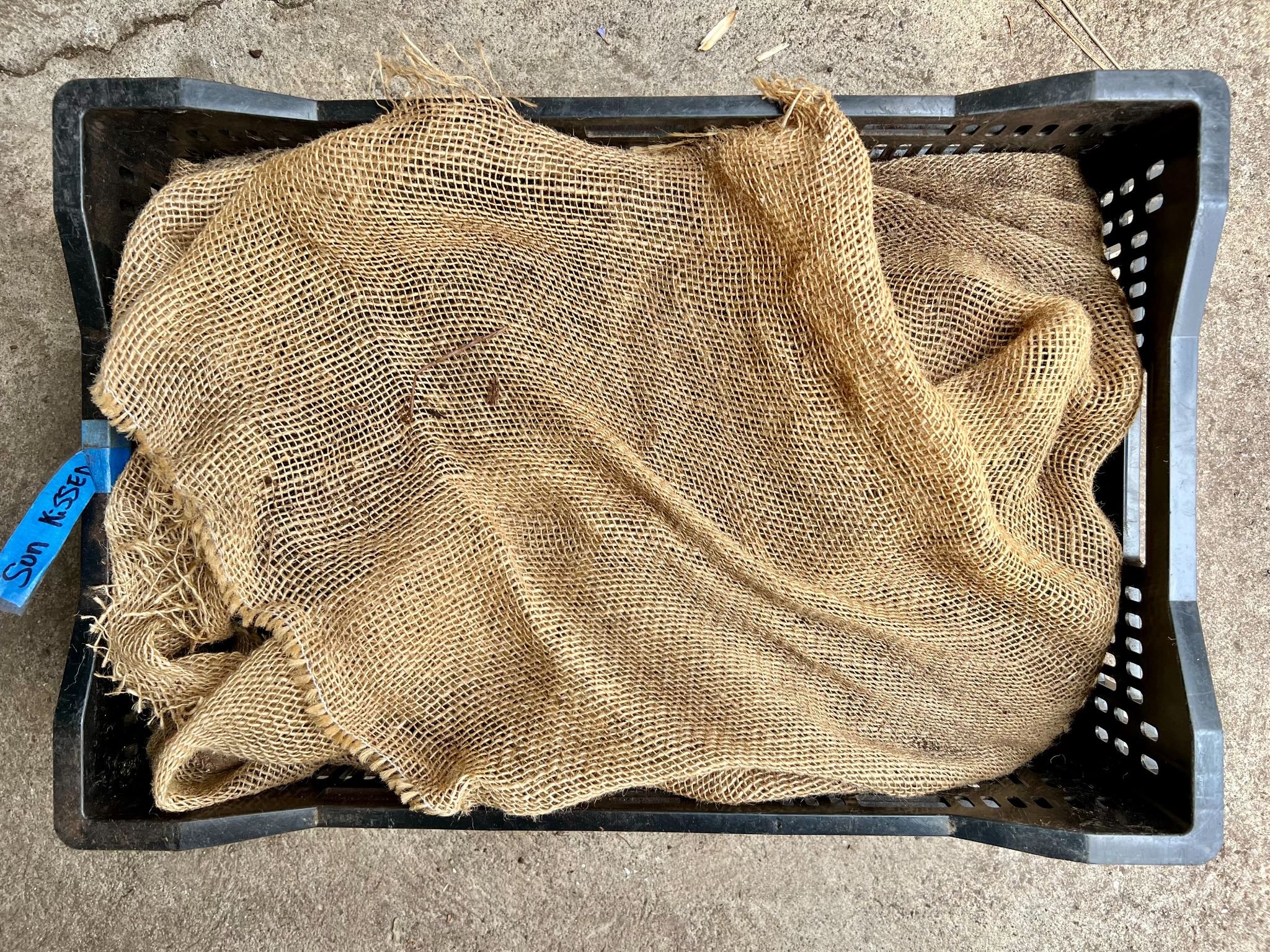How We Grow Dahlias at Sweet Earth Co.
It's safe to say that dahlias are probably my favorite flower — they’re definitely in the top three. There are so many different varieties, and so many different colors that they never cease to stop me in my tracks to marvel at their beauty.
From dinner plate to decorative to ball types, there are so many different varieties. To learn more about the different varieties check out our Dahlia Flower Focus blog where I describe each one in more detail.
In this blog post I’ll be focusing on how we grow dahlias here at Sweet Earth. They are a high maintenance crop – they require a significant amount of labor, they are high feeders and need consistent watering once they start leafing out, and they are also prone to pest pressure. But they are just so beautiful, I think they’re worth it.
Since I grow primarily for my bouquet subscription service (aka Flower CSA) as well as for weddings, the majority of the dahlias that I grow are decorative and ball types, which are easier to design with. I do grow a few dinner plate varieties for the wow factor.
For weddings, my more popular colors are white, burgundy and apricot. For Flower CSA members, I like to mix it up with bright colors and some of the multi-color varieties. And every year I try a few new varieties.
While my favorite varieties are constantly changing, this is a list of my current top five.
I normally pull the dahlias out of storage in March/April and check to see how they made it through the winter before getting them ready to plant in May.
If the tubers are mushy (which is a sign of rot) or very moldy, they go in the garbage bin (not the compost).
All others are divided from clumps into individual tubers. I’m usually too exhausted to divide them at the end of the season when I dig them up. So I brush the soil off and store the clumps. (More details on my storage methods below.)
I also find them easier to divide in the spring when the “eyes” are more clearly visible. It's at this time that I also determine which varieties I want to propagate to increase my inventory. For a tutorial on how to propagate dahlias from cuttings, watch this video on my YouTube Channel.
To get started dividing your tuber clumps you will want:
A clean workspace
A good pair of pruners and a pair of needle nose pruners
A bleach solution or cleanser to clean your pruners
A garden marker and some type of label — I use painter’s tape
Crates or boxes to keep your tubers organized once they have been divided. I clean my pruners between each set of tubers to make sure I don’t spread any potential disease between varieties.
One dahlia tuber planted in the spring turns into a clump of additional tubers by the end of the season. Most of my dahlias produce between 5-20 new tubers each season (some varieties produce more than others).
When you divide the tubers, it is important that each tuber you intend to plant has a crown, its neck intact, at least one viable eye, and some moisture in the body. Tubers come in all sizes and the size of the tuber is not indicative of the quality of the plant it produces.
Also, some tubers might seem very dried out when you take them out of storage, or when they arrive in the mail. If the tuber looks dried out but not stiff, it may still have moisture inside the body and may still be viable. I put those in the “maybe” pile or I may try to pre-sprout it in a pot to be sure it's viable.
I like to start by dividing my tuber clump in half. This allows me to get in and divide the tuber clump into individual tubers. To see this process, be sure to watch the video below as I show you how I divide a clump of tubers.
Now that my tuber clumps have been divided, it's time to prep my planting beds.
Our dahlia beds are in full sun and in well-draining soil. It’s important to note that I do a soil test every fall and address any nutrient deficiencies at that time so that the amendments incorporate over the winter.
To prep the beds in the spring, I clear them of weeds and add some compost. I also lay out the drip irrigation lines. My planting beds are 3 ft wide and I have three rows of irrigation lines.
We normally plant out our tubers in May once the soil temperature has warmed. I space my dahlias 12”-18” apart and I stagger their placement.
We plant our dahlias at a depth of 4" - 6” and lay the tuber on its side with the eye facing up. If there is no eye visible at the time of planting, you can just place the tuber on its side and the growth from the eye will find its way to the surface.
Dahlias should not be watered until you see the first green shoots poking through the ground.
Watering before shoots are visible can lead to rot. After plants reach about 1 foot in height, I give them a hard pinch by snipping the growing center down to the 3rd or 4th set of leaves; this prevents getting a thick center stem (which is not ideal for bouquets) and encourages more branching. More branching means more flower production.
Since dahlia plants have a shallow root system but can get very tall with heavy blooms, it is important to stake them. I have tried several methods and what works the best for me and is most efficient is placing stakes about 5 ft apart along the edge of either side of the bed and then corralling the plants with twine. As the plants grow taller you may need to add another layer of twine.
My experience has been that deer normally do not bother dahlias.
The major pests I have encountered are thrips, Japanese beetles, earwigs and grasshoppers; aphids can also be an issue. While I have tried organic insecticides, I no longer spray my dahlias with an insecticide, instead I focus on making sure the nutrients in the soil are well balanced and I feed the dahlias with a foliar spray of fish and seaweed emulsion. I also plant marigolds nearby which helps control/repel pests. Additionally, there are several fungal issues you may experience, especially if you don’t space your plants to allow sufficient air circulation.
Dahlias can take anywhere from 13 to 18 weeks to bloom after planting.
When I plant mid-May I will likely see first blooms in the second half of August. They are a cut-n-come-again flower which means with regular harvesting and deadheading they will continue to bloom until a hard frost. It is best to pick your flowers earlier in the morning when temperatures are cooler. You also want to pick dahlias when they are almost fully open, as dahlias will not continue to open much after harvesting.
Dahlias have a vase life of 3-7 days if they are kept cool and the water is changed daily. I do not give the dahlias any flower food, just fresh clean water.
So in summary, the growing of dahlias at Sweet Earth is a recurring cycle of: Take out of storage, divide and plant, followed by weekly watering, pest management and harvesting with some occasional fertilizing, ending with digging up tubers after frost and storing, and occasional peeks throughout the winter to make sure they are okay.
A note about storing tubers — we have tried so many different methods of storing:
— Washing and drying before packing vs brushing soil off and storing as is; we now only do the latter.
— We’ve tried packing them in crates filled with vermiculite or pine shavings or peat moss; we now only store in peat moss and cover them with burlap. Yes, we know peat moss is not sustainable, but we have lost so many dahlias using the other noted options. We try to re-use the peat moss elsewhere on the farm.
— We have even tried wrapping the tubers in saran wrap, but quickly decided that it was way too time consuming and not worth the effort.
Last fall I left some tubers in the ground to overwinter.
I piled about 10-12” of leaves onto the beds and then covered them with recycled billboards, which are made of a very thick plastic and are more long lasting than silage tarps. We had a mild winter and not too much snow or precipitation so I’m hopeful they made it through the winter. I’ll be sure to report back on this.






